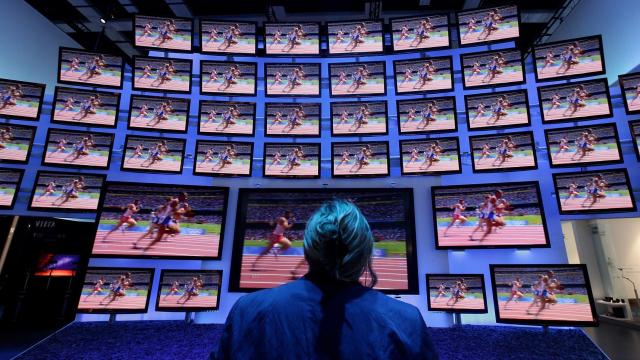As struggling streaming services race to expose more viewers to ads, advertisers are seeing some pretty expensive hiccups start to happen. Case in point: on Monday, GroupM — one of the biggest ad-buying brands around — published a new study that found that about $US1 ($1.44) billion worth of streaming ads every year are playing after people have already turned off their TVs.
To get those figures, the firm spent six months buying streaming ads across 20 million Viso TV sets with the help of iSpotTV, a tv-facing adtech provider. Some of these TVs were your average smart device fare, while others were hooked up to external streaming hardware — from boxes and dongles to sticks and consoles. The results, first reported by The Wall Street Journal, were pretty grim: about 17% of all ads across these streaming devices played after the TV was already powered down.
17% might not sound like a lot, but it’s worth remembering the vast amounts of money advertisers are pouring into these channels every day.
One recent study, for example, estimated that advertisers spent about $US1 ($1).3 billion in 2021 to reach viewers across ad-supported services like Hulu and Peacock, roughly 3% of total digital ad spend and growing. The figure is likely to grow as Disney+ and Netflix debut ad-supported versions of their products. Another study from ad industry insiders found that major brands like Hersheys and Coca-Cola were dropping $US4 ($6) billion alone in the first 4 months of this year; some analysts estimate those figures could spike to nearly $US63 ($87) billion total by the year’s end.
So while GroupM told the Journal that between $US1.5 billion and $US1.9 billion worth of ads are expected to be shown to viewers who can’t see them,” there’s a good chance that’s a pretty conservative estimate.
According to GroupM, the reason that these ads keep playing is because TV-watchers who are using a streaming device typically turn off their television sets instead of taking the time to close their apps first (a practice that I, personally am guilty of). But when these sets are flipped off, the research shows they aren’t always sending the appropriate signal to the streaming devices that are plugged into their ports, which means the streaming services will just keep going. It’ll keep playing your show and any associated ads, until the viewer exits their streaming app, and it doesn’t matter if the device is on or not.
Because this is an issue of TV’s and devices miscommunicating, smartTV’s where the apps are pre-loaded onto the device are far less likely to keep running after their home device is turned off. That said, it still does happen — GroupM says it found “between 8% and 10%” of all ads running on these smart devices after they were powered down.
Despite pouring more and more money each year into streaming and connected services, advertisers in the space have known for years that the mess of consoles and dongles makes it pretty difficult to track where their dollars are ending up. Individual firms have come up with their own piecemeal solutions to the problem, but this new study proves that at least when tens of billions of dollars are on the line, maybe some proprietary tech here and there isn’t enough.
